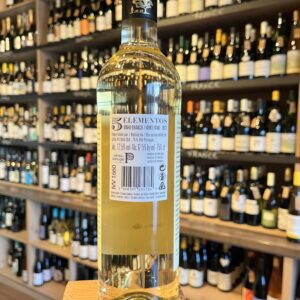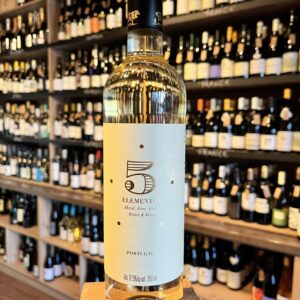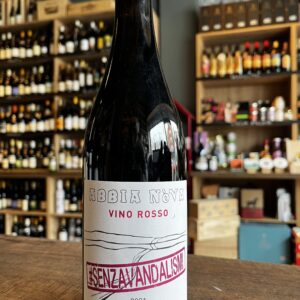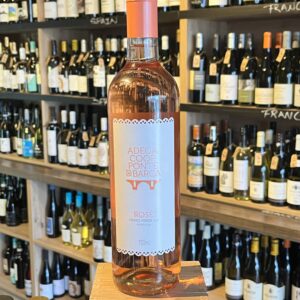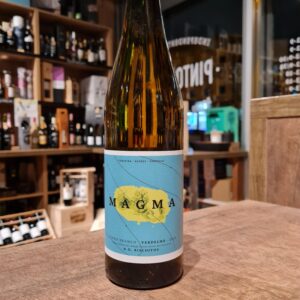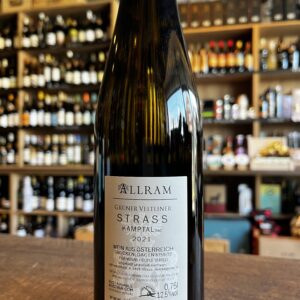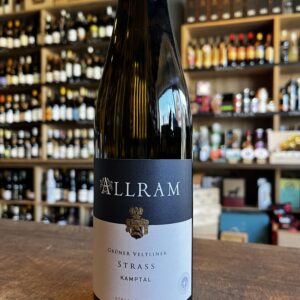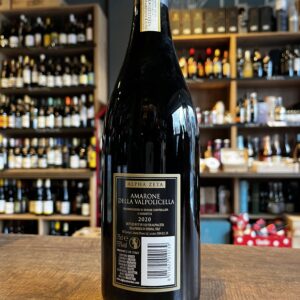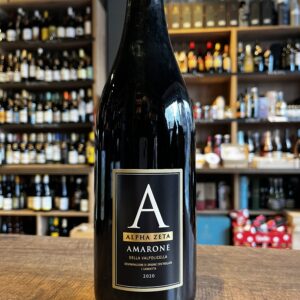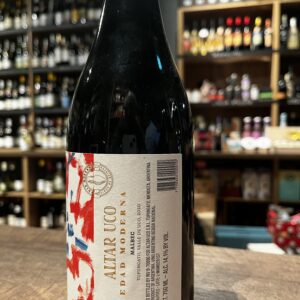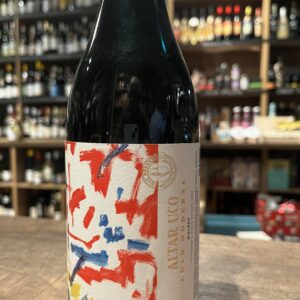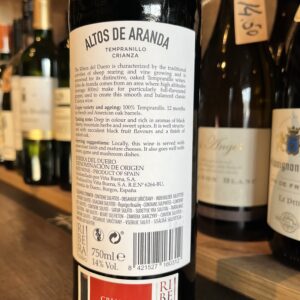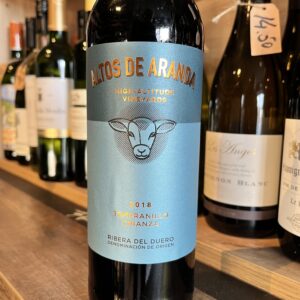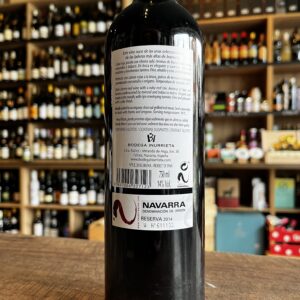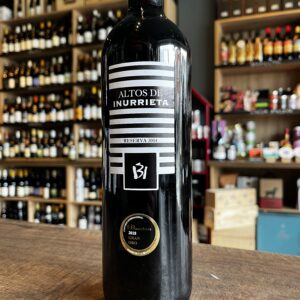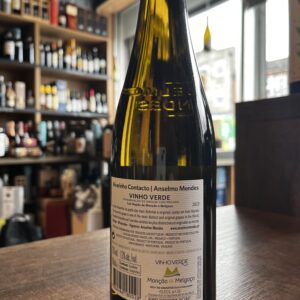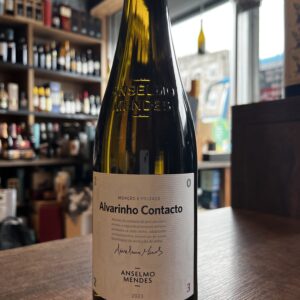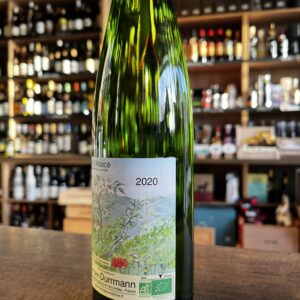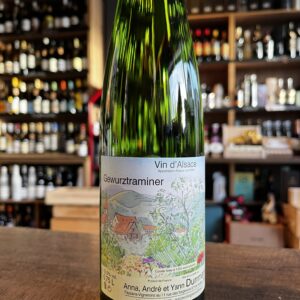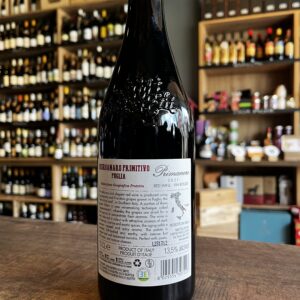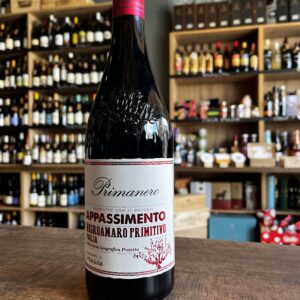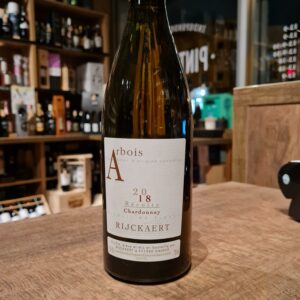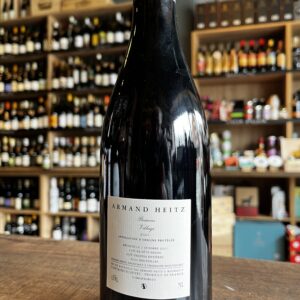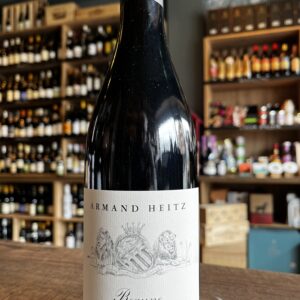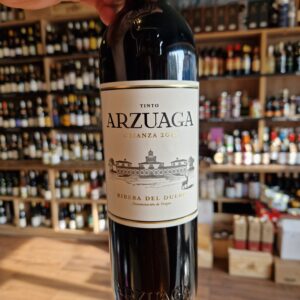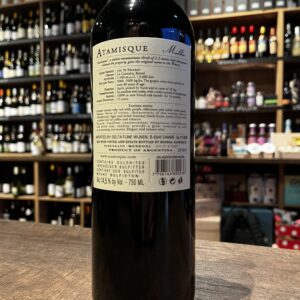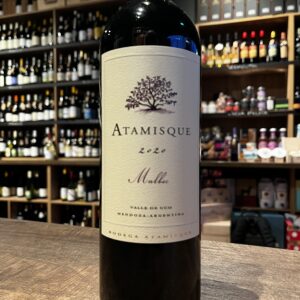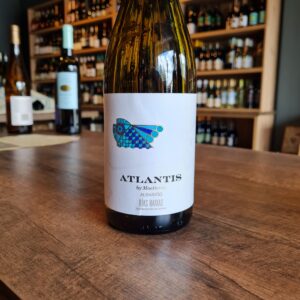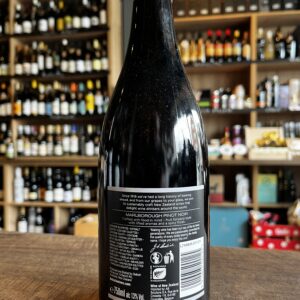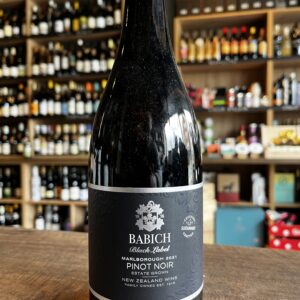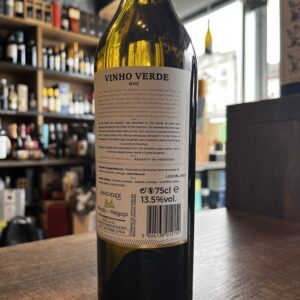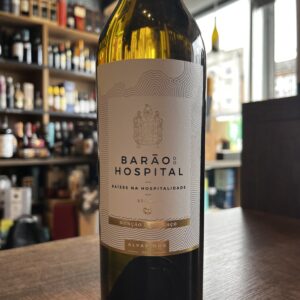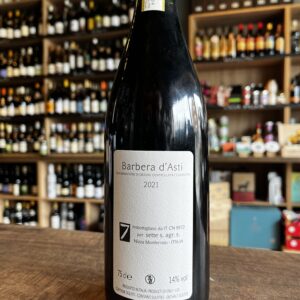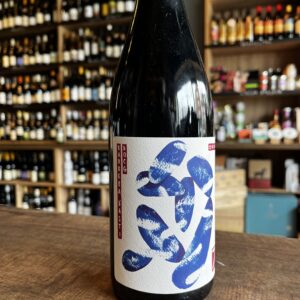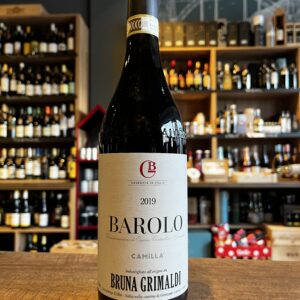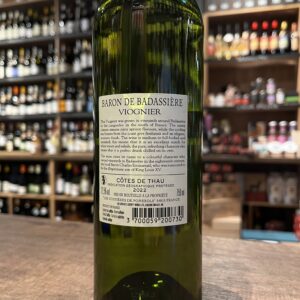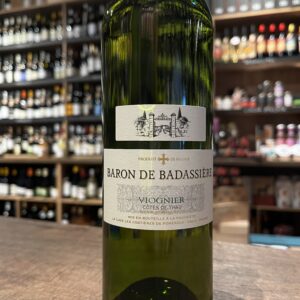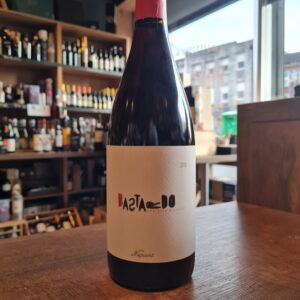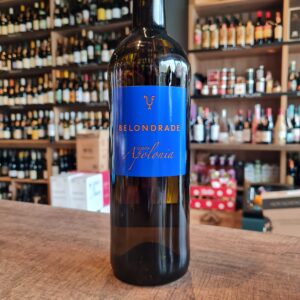-
 We felt this was the most appropriate name for this case as you will be the juror of these 12 bottles of wine. With that in mind we made a 'case' on this one that we think you will enjoy and scrutinize each every single one of them with a delightful outcome. In this case you will find 5 whites, 1 bubbly rosé and 6 delish reds. We rest our case! Whites Convés Branco Alentejo - The Serra do Mendro, located to the north of Vidigueira, creates a natural barrier that favors the retention of fresh winds from the Atlantic Ocean, causing greater rainfall and large thermal amplitudes. Cold mornings and nights and hot days promote a balanced maturation of the grapes, preserving their freshness and natural acidity. The gentle slopes and elevations of the landscape, as well as the clay-schist soils bring minerality, freshness and diversity to the wines of Herdade da Lisboa. It goes very well with fish and seafood dishes, salads or Asian dishes. Merinas Verdejo Organic - Lovely Organic from Castilla de La Mancha is an easy going, fruit forward wine. Generous flavours of citrus, peach, pear, lychee with a hint of jasmine, orange blossom and fennel. Fruity, bright and lively. Goes down very well on its own and pairs nicely with fish, chicken, vegetarian dishes and curry. Willowglen Gewürztraminer Riesling - Two of our favourite white grapes Gewürztraminer (80%) and Riesling (20%) make a delightful pairing in this Australian wine. As a result, you get an off dry floral wine with aromas of Turkish delight and rose petals with a zesty acidity. A popular style offering delicious aromatics making it the perfect choice for Thai or Indian food. Las Sastreria Garnacha Blanca - This delicious wine, belonging to the Haute Couture Print Collection, has been made with white Grenache grapes. It combines modernity and fruit character with the elegance of the Mediterranean style of this variety. Ideal with appetizers, seafood entrees, fish, white meat and pasta. Les Anges Sauvignon Blanc - Another one that won’t disappoint. This is a Val de Loire dry white. In Sancerre Kingdom this is an entry level Sauvignon Blanc that doesn't over promised but over delivers. Elegant and refreshing with a good burst of fruit and a touch of minerality. Bright, fresh yellow color. Flowery on the palate, fresh and delicate, fruity with a smooth finish. Produced thinking on sustainability it's a local wine for local people that got it's foot out of the region due to it's simplicity and quality La Jara Frizzante Rosé - A totally irresistible semi-sparkling Italian rosé from one of our favourite Prosecco producers, La Jara, but in this case they use a little bit of the red grape, Raboso, to give the wine its lovely pale coral colour. Dry on the palate and bursting with fresh strawberry notes reined in by the pithy bite of pink grapefruit. At 10.5% this is the wine to drink in the park with socially distanced friends, or with lunch in the garden before you’re really meant to be getting stuck into the vino! Bodegas Matsu El Picaro - The name El Picaro translates to The Rogue, and Matsu is the Japanese word meaning to wait, referencing the balance of attitude and patience that goes into making this wine. Fruit is hand harvested from a selection of 90-year-old vineyards in Toro (Spain) that are cultivated using biodynamic techniques. It has an intense aroma in which one can find blackberry, blueberry compote, cocoa and toasted almond characters. It is succulent and supple, and displays excellent fruit intensity, wonderfully supported by silky texture and fine tannins. The wine is fleshy and generous and will be a crowd pleaser. Colossal reserva tinto - "Colossal" is defined by something gigantic in place and time. This red from Lisbon has an intense ruby color and presents itself with a great concentration in the nose. Extremely rich aroma with predominance of red ripe fruits and some floral notes, well integrated with notes of spices coming from the ageing in French and American oak barrels. In the mouth it shows great complexity with notes of plums and blackberries. The finish is rich and elegant. Herdade Da Pimenta Colheita 2019 - The Portuguese rising region Alentejo is just made for such quality wines. The strong temperature differences between day and night temperatures have a beneficial effect on the nutrient absorption, acidity and sugar content of the grapes. This Pimenta Colheita Alentejo from Herdade da Pimenta shows deep ruby red with violet nuances. A complex scent of blueberries, white flowers and fine vanilla/wood aromas accompany the elegant fruit of the Pimenta Colheita. Chocolate and coconut notes are perceived on the palate, accompanied by delicate herbal and spicy notes, complex and balanced. The oak shows up in the Pimenta Colheita in a discreet caramel note with pleasant, fine-grained and soft tannins. The finish is concentrated, spicy and long-lasting. Château Haut Gravelier - Château Gravelier is located on superb hillsides on the edge of Entre Deux Mers, Bordeaux. Classic French blend of 70% Merlot 30% Cabernet Sauvignon. With deep colour, classic structure and unusually ripe flavours, this is classic claret to serve with roast beef, duck or T-bone steak. Heartland Stickleback 2016 Shiraz - This intense Shiraz swims against the current and harnesses the best that Australia has to offer. It is a wine of style and substance, offering dark fruits and hints of herbs. Col Di Sasso Castello Banfi - One of the best known and appreciated Banfi labels in the world, Col di Sasso, which translates to "Stony Hill", is a blend of Cabernet Sauvignon and Sangiovese cultivated on the most rocky and impervious slopes of the Banfi estate in Montalcino. The perfect marriage between these two grapes gives birth to a youthful yet concentrated and extremely fruity red wine. Great place to stay in Tuscany if you get a chance.
We felt this was the most appropriate name for this case as you will be the juror of these 12 bottles of wine. With that in mind we made a 'case' on this one that we think you will enjoy and scrutinize each every single one of them with a delightful outcome. In this case you will find 5 whites, 1 bubbly rosé and 6 delish reds. We rest our case! Whites Convés Branco Alentejo - The Serra do Mendro, located to the north of Vidigueira, creates a natural barrier that favors the retention of fresh winds from the Atlantic Ocean, causing greater rainfall and large thermal amplitudes. Cold mornings and nights and hot days promote a balanced maturation of the grapes, preserving their freshness and natural acidity. The gentle slopes and elevations of the landscape, as well as the clay-schist soils bring minerality, freshness and diversity to the wines of Herdade da Lisboa. It goes very well with fish and seafood dishes, salads or Asian dishes. Merinas Verdejo Organic - Lovely Organic from Castilla de La Mancha is an easy going, fruit forward wine. Generous flavours of citrus, peach, pear, lychee with a hint of jasmine, orange blossom and fennel. Fruity, bright and lively. Goes down very well on its own and pairs nicely with fish, chicken, vegetarian dishes and curry. Willowglen Gewürztraminer Riesling - Two of our favourite white grapes Gewürztraminer (80%) and Riesling (20%) make a delightful pairing in this Australian wine. As a result, you get an off dry floral wine with aromas of Turkish delight and rose petals with a zesty acidity. A popular style offering delicious aromatics making it the perfect choice for Thai or Indian food. Las Sastreria Garnacha Blanca - This delicious wine, belonging to the Haute Couture Print Collection, has been made with white Grenache grapes. It combines modernity and fruit character with the elegance of the Mediterranean style of this variety. Ideal with appetizers, seafood entrees, fish, white meat and pasta. Les Anges Sauvignon Blanc - Another one that won’t disappoint. This is a Val de Loire dry white. In Sancerre Kingdom this is an entry level Sauvignon Blanc that doesn't over promised but over delivers. Elegant and refreshing with a good burst of fruit and a touch of minerality. Bright, fresh yellow color. Flowery on the palate, fresh and delicate, fruity with a smooth finish. Produced thinking on sustainability it's a local wine for local people that got it's foot out of the region due to it's simplicity and quality La Jara Frizzante Rosé - A totally irresistible semi-sparkling Italian rosé from one of our favourite Prosecco producers, La Jara, but in this case they use a little bit of the red grape, Raboso, to give the wine its lovely pale coral colour. Dry on the palate and bursting with fresh strawberry notes reined in by the pithy bite of pink grapefruit. At 10.5% this is the wine to drink in the park with socially distanced friends, or with lunch in the garden before you’re really meant to be getting stuck into the vino! Bodegas Matsu El Picaro - The name El Picaro translates to The Rogue, and Matsu is the Japanese word meaning to wait, referencing the balance of attitude and patience that goes into making this wine. Fruit is hand harvested from a selection of 90-year-old vineyards in Toro (Spain) that are cultivated using biodynamic techniques. It has an intense aroma in which one can find blackberry, blueberry compote, cocoa and toasted almond characters. It is succulent and supple, and displays excellent fruit intensity, wonderfully supported by silky texture and fine tannins. The wine is fleshy and generous and will be a crowd pleaser. Colossal reserva tinto - "Colossal" is defined by something gigantic in place and time. This red from Lisbon has an intense ruby color and presents itself with a great concentration in the nose. Extremely rich aroma with predominance of red ripe fruits and some floral notes, well integrated with notes of spices coming from the ageing in French and American oak barrels. In the mouth it shows great complexity with notes of plums and blackberries. The finish is rich and elegant. Herdade Da Pimenta Colheita 2019 - The Portuguese rising region Alentejo is just made for such quality wines. The strong temperature differences between day and night temperatures have a beneficial effect on the nutrient absorption, acidity and sugar content of the grapes. This Pimenta Colheita Alentejo from Herdade da Pimenta shows deep ruby red with violet nuances. A complex scent of blueberries, white flowers and fine vanilla/wood aromas accompany the elegant fruit of the Pimenta Colheita. Chocolate and coconut notes are perceived on the palate, accompanied by delicate herbal and spicy notes, complex and balanced. The oak shows up in the Pimenta Colheita in a discreet caramel note with pleasant, fine-grained and soft tannins. The finish is concentrated, spicy and long-lasting. Château Haut Gravelier - Château Gravelier is located on superb hillsides on the edge of Entre Deux Mers, Bordeaux. Classic French blend of 70% Merlot 30% Cabernet Sauvignon. With deep colour, classic structure and unusually ripe flavours, this is classic claret to serve with roast beef, duck or T-bone steak. Heartland Stickleback 2016 Shiraz - This intense Shiraz swims against the current and harnesses the best that Australia has to offer. It is a wine of style and substance, offering dark fruits and hints of herbs. Col Di Sasso Castello Banfi - One of the best known and appreciated Banfi labels in the world, Col di Sasso, which translates to "Stony Hill", is a blend of Cabernet Sauvignon and Sangiovese cultivated on the most rocky and impervious slopes of the Banfi estate in Montalcino. The perfect marriage between these two grapes gives birth to a youthful yet concentrated and extremely fruity red wine. Great place to stay in Tuscany if you get a chance. -
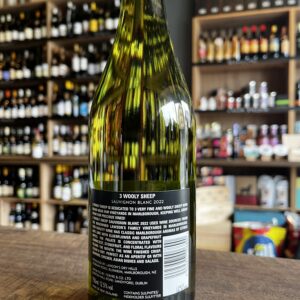
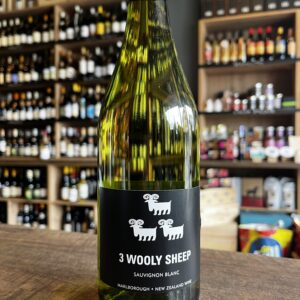 This quality wine has classic Marlborough aromas of citrus and limes with elderflower and grapefruit notes. The palate is concentrated with lemon zest, stonefruit and floral flavours filling the mouth. The wine finishes crisp, clean and dry. Perfect as an aperitif or with seafood, chicken, Asian dishes and salads.
This quality wine has classic Marlborough aromas of citrus and limes with elderflower and grapefruit notes. The palate is concentrated with lemon zest, stonefruit and floral flavours filling the mouth. The wine finishes crisp, clean and dry. Perfect as an aperitif or with seafood, chicken, Asian dishes and salads. -
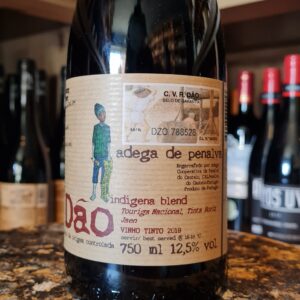 Adega de Penalva wines are delicious everyday examples of one of Portugal’s most intriguing appellations — the Dão. Perched above the Dão river itself as it snakes through its granite valleys, the Adega de Penalva is one of the leading cooperatives in the area, boasting around a thousand member growers. It’s important to note, though, that the average holding per member amounts to barely over a hectare—a figure that reminds us how tenaciously much of rural Portugal clings to its old ways. (On that note, all fruit destined for the ‘Indigena’ bottlings is hand-harvested.) Since its founding in the 1960s, the Adega has been collecting its members’ grapes and producing clean, characterful wines with a minimum of fuss that showcase real regional typicity while remaining extremely attractively priced. Adega de Penalva Indigena Dao Tinto is made with 40% Touriga Nacional, 30% Tinta Roriz (Tempranillo), and 30% Jaen (Mencía). Hand-harvested, fully destemmed and aged in a combination of stainless steel and concrete tank. Aromas of leather and blueberries lead to a palate full of dark fruits with cherry and raspberry notes. Pairs well with beef and lamb.
Adega de Penalva wines are delicious everyday examples of one of Portugal’s most intriguing appellations — the Dão. Perched above the Dão river itself as it snakes through its granite valleys, the Adega de Penalva is one of the leading cooperatives in the area, boasting around a thousand member growers. It’s important to note, though, that the average holding per member amounts to barely over a hectare—a figure that reminds us how tenaciously much of rural Portugal clings to its old ways. (On that note, all fruit destined for the ‘Indigena’ bottlings is hand-harvested.) Since its founding in the 1960s, the Adega has been collecting its members’ grapes and producing clean, characterful wines with a minimum of fuss that showcase real regional typicity while remaining extremely attractively priced. Adega de Penalva Indigena Dao Tinto is made with 40% Touriga Nacional, 30% Tinta Roriz (Tempranillo), and 30% Jaen (Mencía). Hand-harvested, fully destemmed and aged in a combination of stainless steel and concrete tank. Aromas of leather and blueberries lead to a palate full of dark fruits with cherry and raspberry notes. Pairs well with beef and lamb. -
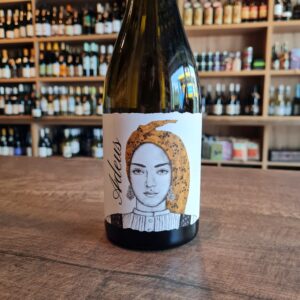 Adeus is the same in Galician as it is Portuguese and means ''Goodbye''. It is also the title of a Galician poem done by one of the most famous poets of Galicia, Rosalia de Castro. One worth that stays in between the love for her land and a homage to a woman that means so much for the history of Galicia. The Ribeiro is 45 km inland from the Atlantic Ocean and is situated in the middle of Valleys that protects it from the Atlantic winds. With 3 Rivers crossing has excellent conditions to produce wine. An excellent pair to grilled octopus with white asparagus garnish, monkfish fillet with stewed spinach and shrimps in garlic sauce
Adeus is the same in Galician as it is Portuguese and means ''Goodbye''. It is also the title of a Galician poem done by one of the most famous poets of Galicia, Rosalia de Castro. One worth that stays in between the love for her land and a homage to a woman that means so much for the history of Galicia. The Ribeiro is 45 km inland from the Atlantic Ocean and is situated in the middle of Valleys that protects it from the Atlantic winds. With 3 Rivers crossing has excellent conditions to produce wine. An excellent pair to grilled octopus with white asparagus garnish, monkfish fillet with stewed spinach and shrimps in garlic sauce -
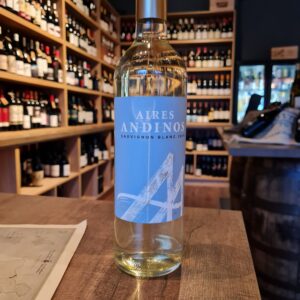 What a wonderfully crisp glass of white wine made from Sauvignon Blanc. The grape that you don't see much in Argentina but offers an excellent wine at the right height. Well, that is a must with this Aires Andinos Sauvignon Blanc, because the vineyards are at a very high altitude in Mendoza. This gives the vines a lot of cooling and that gives a unique taste to this white wine. The aires Andinos winery has invested a lot in recent years and we can taste that. The wines have become purer and riper and as a result have become intensely popular in Argentina. In the glass, this white Aires Andinos Sauvignon Blanc turns pale yellow with green hues. It smells of notes of freshly cut grass, citrus and of course some grapefruit. Just waltz with the glass and we also smell some green asparagus and bell pepper. In the mouth, this Sauvignon Blanc has a fresh feeling on the tongue with light acidity. Lots of fruitiness of apple, lime and grapefruit that lingers in the aftertaste.
What a wonderfully crisp glass of white wine made from Sauvignon Blanc. The grape that you don't see much in Argentina but offers an excellent wine at the right height. Well, that is a must with this Aires Andinos Sauvignon Blanc, because the vineyards are at a very high altitude in Mendoza. This gives the vines a lot of cooling and that gives a unique taste to this white wine. The aires Andinos winery has invested a lot in recent years and we can taste that. The wines have become purer and riper and as a result have become intensely popular in Argentina. In the glass, this white Aires Andinos Sauvignon Blanc turns pale yellow with green hues. It smells of notes of freshly cut grass, citrus and of course some grapefruit. Just waltz with the glass and we also smell some green asparagus and bell pepper. In the mouth, this Sauvignon Blanc has a fresh feeling on the tongue with light acidity. Lots of fruitiness of apple, lime and grapefruit that lingers in the aftertaste. -
Out of stock
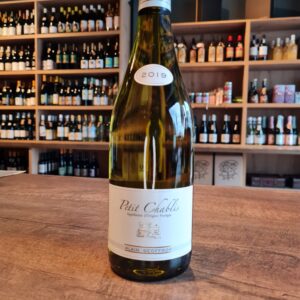 This wine is lively, pleasant and fruity. Lovely citrus flavours on a fine, minerally background. Alain Geoffroy’s vineyard is located on Kimmeridgian limestone with 15-20 years old vines, that has made the mineral-driven wines of Chablis so famous. Making this a very serious wine for its price and a go-to white for summer lunches, big dinner parties, fish, seafood, goats cheese, crunchy salads and filling the wine rack. Nothing little about this Petit-Chablis and without the price of a Grand Cru.
This wine is lively, pleasant and fruity. Lovely citrus flavours on a fine, minerally background. Alain Geoffroy’s vineyard is located on Kimmeridgian limestone with 15-20 years old vines, that has made the mineral-driven wines of Chablis so famous. Making this a very serious wine for its price and a go-to white for summer lunches, big dinner parties, fish, seafood, goats cheese, crunchy salads and filling the wine rack. Nothing little about this Petit-Chablis and without the price of a Grand Cru. -
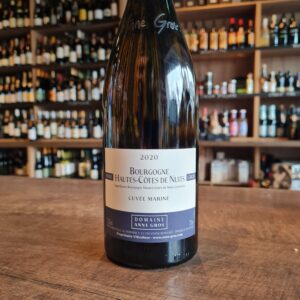 Anne Gros, the only daughter of François Gros, has established a solid character and reputation in the wine world after taking over her father’s domaine in 1988. At 25 years old, Anne saw the family domaine grow from 7 to 16 acres. Recently, she invested in a new cellar. She is a winegrower suspicious of certitude and fastidious about maintaining her freedom. As a woman winegrower, Anne knew how to prove herself and convince all who doubted of her ability to manage a domaine. She showed that she had not only the shoulders but the head to make her family heritage one of the greatest domaines of Burgundy. In 1984 she had to stop studying Arts to study vines’culture and oenology in Beaune and Dijon. Now her passion for vine and wine as well as her talent, sensitivity and professionalism posit her as a winemaker enthusiasts can rely on. Anne Gros has always been concerned about the environment, however she did not always find what she was looking for. so with this conviction, Anne Gros continued her approach to ecology without the recognition of organic certification The first harvest of this wine was 1999, Now the vines are mature and bringing very expressive fruit. This 4 acre single block parcel is situated in the commune of Concoeur just above the village of Vosne-Romanée. Originally bare of any vines, it was planted in stages (1996, 1997 and 1998). Chardonnay vines make up 2.4 acres on the upper part of the slope, where the earth is deeper and more humid (this is where the water of the hillside resurges). On the land itself: is an area rarely exceeding 300 metres in altitude in the west. the geographical diversity of burgundy leads to a diversity of climates and the existence of numerous micro-climates. the average annual insolation is 2000 hours, the average temperature is 11.5 degrees celsius. the côte de nuits is carved out of jurassic limestone. as its name suggests, the côte has a fairly steep slope. the clay-limestone complexes, the different sun exposures and the climatic data resulting from the shaping of the combes perpendicular to the fault line of the coast give us a very fragmented pdo classification system. Highly recommended with raw or grilled fish, shellfish in a court-bouillon, white meat, charcuterie without garlic and goat cheese. Fantastic Burgundy and not easy to find due to its limit production. Try it while you can
Anne Gros, the only daughter of François Gros, has established a solid character and reputation in the wine world after taking over her father’s domaine in 1988. At 25 years old, Anne saw the family domaine grow from 7 to 16 acres. Recently, she invested in a new cellar. She is a winegrower suspicious of certitude and fastidious about maintaining her freedom. As a woman winegrower, Anne knew how to prove herself and convince all who doubted of her ability to manage a domaine. She showed that she had not only the shoulders but the head to make her family heritage one of the greatest domaines of Burgundy. In 1984 she had to stop studying Arts to study vines’culture and oenology in Beaune and Dijon. Now her passion for vine and wine as well as her talent, sensitivity and professionalism posit her as a winemaker enthusiasts can rely on. Anne Gros has always been concerned about the environment, however she did not always find what she was looking for. so with this conviction, Anne Gros continued her approach to ecology without the recognition of organic certification The first harvest of this wine was 1999, Now the vines are mature and bringing very expressive fruit. This 4 acre single block parcel is situated in the commune of Concoeur just above the village of Vosne-Romanée. Originally bare of any vines, it was planted in stages (1996, 1997 and 1998). Chardonnay vines make up 2.4 acres on the upper part of the slope, where the earth is deeper and more humid (this is where the water of the hillside resurges). On the land itself: is an area rarely exceeding 300 metres in altitude in the west. the geographical diversity of burgundy leads to a diversity of climates and the existence of numerous micro-climates. the average annual insolation is 2000 hours, the average temperature is 11.5 degrees celsius. the côte de nuits is carved out of jurassic limestone. as its name suggests, the côte has a fairly steep slope. the clay-limestone complexes, the different sun exposures and the climatic data resulting from the shaping of the combes perpendicular to the fault line of the coast give us a very fragmented pdo classification system. Highly recommended with raw or grilled fish, shellfish in a court-bouillon, white meat, charcuterie without garlic and goat cheese. Fantastic Burgundy and not easy to find due to its limit production. Try it while you can -
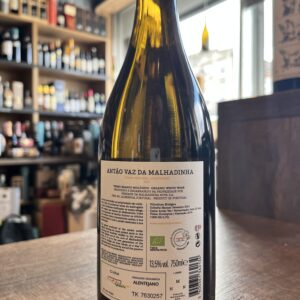
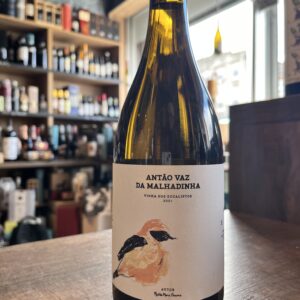 Herdade da Malhadinha Nova is the representation of an ambitious and innovative project of the Soares family, who have transformed a piece of Alentejo land, into one of the most beautiful and charismatic estates in the Alentejo. Located in Albernoa and currently possessing 80 hectares of vineyards, it is here that wines full of personality are created, whose labels are based on the children's drawings of their offspring. In addition to the focus on vines and wine, the estate is also farmed for olive groves and olive oil production, as well as rural and wine tourism activities.
Herdade da Malhadinha Nova is the representation of an ambitious and innovative project of the Soares family, who have transformed a piece of Alentejo land, into one of the most beautiful and charismatic estates in the Alentejo. Located in Albernoa and currently possessing 80 hectares of vineyards, it is here that wines full of personality are created, whose labels are based on the children's drawings of their offspring. In addition to the focus on vines and wine, the estate is also farmed for olive groves and olive oil production, as well as rural and wine tourism activities. -
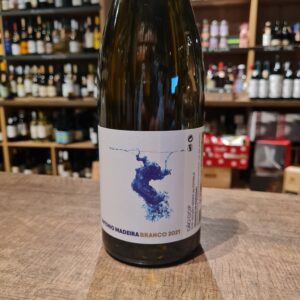
 António Madeira is a Frenchman with Portuguese roots who considers that the heart of Dão, one of Portugal’s most interesting wine regions, is in the Serra do Estrela, which is where he can trace his Portuguese roots back to. Madeira has been researching the area since 2010, and he has managed to rescue interesting vineyards with abandoned old vines growing an impressive number of native varieties. This is winemaking that dates back a long time, where the plots have special granite soils, a good altitude and sun exposure and they are cultivated with great care for the environment. All of these factors result in authentic wines, with an honest personality. An excellent return to origins.
António Madeira is a Frenchman with Portuguese roots who considers that the heart of Dão, one of Portugal’s most interesting wine regions, is in the Serra do Estrela, which is where he can trace his Portuguese roots back to. Madeira has been researching the area since 2010, and he has managed to rescue interesting vineyards with abandoned old vines growing an impressive number of native varieties. This is winemaking that dates back a long time, where the plots have special granite soils, a good altitude and sun exposure and they are cultivated with great care for the environment. All of these factors result in authentic wines, with an honest personality. An excellent return to origins. -
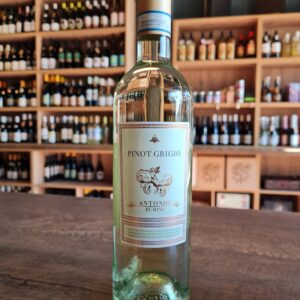 The Pinot Grigio grapes from this wine come from the Veneto (Pavia region, near Milan) region of Italy, where the Pinot Grigio grape has been cultivated for more than a century. The wine shows apple and pear with hints of white peach and elderflower. Light and refreshing, a mouth-watering partner for salads and seafood, great in the summer.
The Pinot Grigio grapes from this wine come from the Veneto (Pavia region, near Milan) region of Italy, where the Pinot Grigio grape has been cultivated for more than a century. The wine shows apple and pear with hints of white peach and elderflower. Light and refreshing, a mouth-watering partner for salads and seafood, great in the summer. -
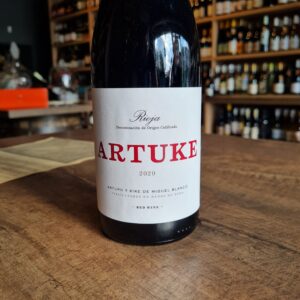 Made in a Beaujolais style, with the carbonic maceration method. This juicy ''Joven'' fresh fruited style of Rioja has zero oak influence as it ages in concrete tanks for 6 months. Farmed without any synthetic fertilizers or pesticides. Arturo Blanco was once asked what the philosophy at Bodegas Artuke was and he simply replied 'we are farmers'. The approach here is 100% focused on interpreting the family's 32 plots which are split between the villages of Baños de Ebro and Ábalos in Rioja Alavesa. Biodynamic techniques are employed in the vineyards and Arturo and Kike are also busy recovering old, ignored plots of ancient vines. Vinification is aimed at expressing the characteristics of the vineyard and quality of fruit above all else. The restrained use of oak and inclination towards different types/sizes of barrel, plus an unwillingness to adhere to the subscribed regimes for classification means that Artuke are precluded from using Crianza, Reserva and Gran Reserva designations on their wines. This mouth-watering red wine takes a relatively deep chill which makes it a versatile pairing with all types of food: tuna, pretty much anything made with zucchini, fried chicken, gooey cheese sandwiches, pizza, etc…
Made in a Beaujolais style, with the carbonic maceration method. This juicy ''Joven'' fresh fruited style of Rioja has zero oak influence as it ages in concrete tanks for 6 months. Farmed without any synthetic fertilizers or pesticides. Arturo Blanco was once asked what the philosophy at Bodegas Artuke was and he simply replied 'we are farmers'. The approach here is 100% focused on interpreting the family's 32 plots which are split between the villages of Baños de Ebro and Ábalos in Rioja Alavesa. Biodynamic techniques are employed in the vineyards and Arturo and Kike are also busy recovering old, ignored plots of ancient vines. Vinification is aimed at expressing the characteristics of the vineyard and quality of fruit above all else. The restrained use of oak and inclination towards different types/sizes of barrel, plus an unwillingness to adhere to the subscribed regimes for classification means that Artuke are precluded from using Crianza, Reserva and Gran Reserva designations on their wines. This mouth-watering red wine takes a relatively deep chill which makes it a versatile pairing with all types of food: tuna, pretty much anything made with zucchini, fried chicken, gooey cheese sandwiches, pizza, etc… -
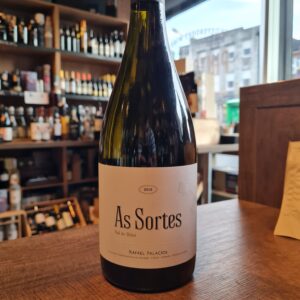 Rafael Palacios is the son of D. José Palacios Remondo (founder of Bodegas Palacios Remondo) and the brother of Alvaro Palacios(Priorat) but ultimately a passionate producer of white wine. After producing his first white at the family-run winery, called Plácet, he decided to set up his own winery in Galicia, in the Valle del Bibei, under the Valdeorras denomination. Established in 2004, Rafael Palacios has rapidly become one of Spain’s greatest producers of white wine. His focus is on the local variety Godello, grown in a small estate on very old vines that are up to 90 years old from the areas steep-sided, terraced vineyards and have been cultivated with respect of the land, without using any type of herbicide or pesticide. Rafael Palacios is refining his work year after year, reaching the magic of the greatest wines. A top wine, and one to keep. Grub pairing suggestions are mild Asian dishes, Moroccan specialities, fish ragout with saffron sauce Risotto ai frutti di mar
Rafael Palacios is the son of D. José Palacios Remondo (founder of Bodegas Palacios Remondo) and the brother of Alvaro Palacios(Priorat) but ultimately a passionate producer of white wine. After producing his first white at the family-run winery, called Plácet, he decided to set up his own winery in Galicia, in the Valle del Bibei, under the Valdeorras denomination. Established in 2004, Rafael Palacios has rapidly become one of Spain’s greatest producers of white wine. His focus is on the local variety Godello, grown in a small estate on very old vines that are up to 90 years old from the areas steep-sided, terraced vineyards and have been cultivated with respect of the land, without using any type of herbicide or pesticide. Rafael Palacios is refining his work year after year, reaching the magic of the greatest wines. A top wine, and one to keep. Grub pairing suggestions are mild Asian dishes, Moroccan specialities, fish ragout with saffron sauce Risotto ai frutti di mar -
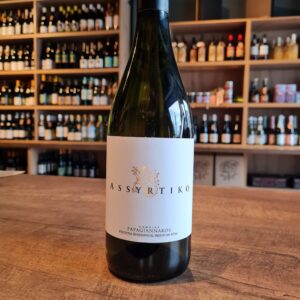 Founded in 1919, Domaine Papagiannakos is located in the Attica region of Central Greece, just 18 miles from Athens. Today, the winery is run by the 3rd generation, Vassilis Papagiannakos, who has issued a new era of modern winemaking while still maintaining the family’s dedication to cultivating and preserving the region’s most famous indigenous grape, Savatiano. In addition the Domaine has plant Malagousia and Assyrtiko. The Assyrtiko vineyards are located in northeastern Attica at an altitude of 330 feet. The vineyard has a northeastern facing exposure. The vineyard is farmed without irrigation, resulting in low-yielding vines that produce grapes with rich, concentrated fruit flavors. The limestone soil and the unique microclimate of the region produces wine with a very clean and crisp profile with citrus and white flesh aromas.The acidity is very well integrated into the wine and gives the ability for long aging. With aging the wine develops a beautiful mineral character. The refreshing character of the wine makes it an ideal accompaniment for seafood, fish, white meat, and Mediterranean cuisine.
Founded in 1919, Domaine Papagiannakos is located in the Attica region of Central Greece, just 18 miles from Athens. Today, the winery is run by the 3rd generation, Vassilis Papagiannakos, who has issued a new era of modern winemaking while still maintaining the family’s dedication to cultivating and preserving the region’s most famous indigenous grape, Savatiano. In addition the Domaine has plant Malagousia and Assyrtiko. The Assyrtiko vineyards are located in northeastern Attica at an altitude of 330 feet. The vineyard has a northeastern facing exposure. The vineyard is farmed without irrigation, resulting in low-yielding vines that produce grapes with rich, concentrated fruit flavors. The limestone soil and the unique microclimate of the region produces wine with a very clean and crisp profile with citrus and white flesh aromas.The acidity is very well integrated into the wine and gives the ability for long aging. With aging the wine develops a beautiful mineral character. The refreshing character of the wine makes it an ideal accompaniment for seafood, fish, white meat, and Mediterranean cuisine. -
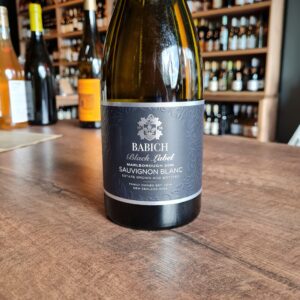 The Babich family hails from Croatia and first bought land in New Zealand in 1916. The winery is now in its third generation. Fruit for this wine comes from a variety of its estate-owned vineyards which are sustainable or organic. Most of the juice for this wine is fermented in stainless steel with a small percentage in old oak. Crafted with food in mind-weighty, ripe, tropical fruit, flavoured style, rich and rounded. Pair it with veal, seafood (oysters) or a chicken dish.
The Babich family hails from Croatia and first bought land in New Zealand in 1916. The winery is now in its third generation. Fruit for this wine comes from a variety of its estate-owned vineyards which are sustainable or organic. Most of the juice for this wine is fermented in stainless steel with a small percentage in old oak. Crafted with food in mind-weighty, ripe, tropical fruit, flavoured style, rich and rounded. Pair it with veal, seafood (oysters) or a chicken dish. -
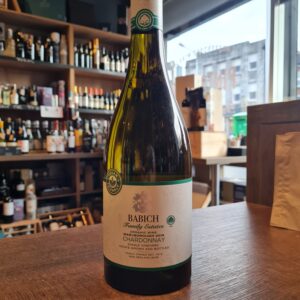 Family Estates Organic Marlborough Chardonnay; a complex style of Chardonnay grown in our Headwaters vineyard in Marlborough. The cooler climate and alluvial soils of Marlborough deliver flavour and varietal complexity that is reflective of the region and our winemaker’s commitment to sustainably crafting the most drinkable New Zealand wines in the world. This organic Chardonnay wine would go well with poultry or fish or vegetable medley.
Family Estates Organic Marlborough Chardonnay; a complex style of Chardonnay grown in our Headwaters vineyard in Marlborough. The cooler climate and alluvial soils of Marlborough deliver flavour and varietal complexity that is reflective of the region and our winemaker’s commitment to sustainably crafting the most drinkable New Zealand wines in the world. This organic Chardonnay wine would go well with poultry or fish or vegetable medley. -
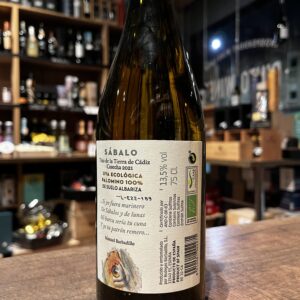
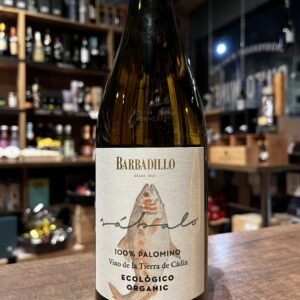 Sábalo is produced from 100% ecological Palomino Fino grapes and it is a spectacular wine, the true fruit of our many years of expertise. The grapes used to produce this wine are harvested in the white albariza soils of Sanlúcar, and as such the sea, the marshlands and the Guadalquivir River all form part of what is essentially Sábalo’s DNA.
Sábalo is produced from 100% ecological Palomino Fino grapes and it is a spectacular wine, the true fruit of our many years of expertise. The grapes used to produce this wine are harvested in the white albariza soils of Sanlúcar, and as such the sea, the marshlands and the Guadalquivir River all form part of what is essentially Sábalo’s DNA. -
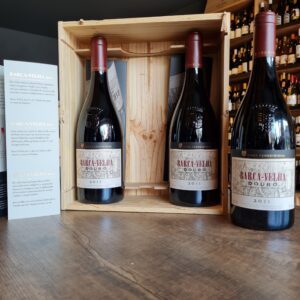 Casa Ferreirinha, was acquired by Sogrape Vinhos in 1987, its wines are synonymous with time and art. This has happened since its foundation, in the 18th century, by the hand of Bernardo Ferreira, who saw the formula refined by his descendants, especially by his granddaughter Dona Antónia Adelaide Ferreira, who affectionately became known as "Ferreirinha" or "Ferreirinha-da-Régua" for the people of that land. Through the hands of Dona Antónia, who twice widowed herself at the head of a large company, Ferreira consolidated itself admirably. Her entrepreneurial spirit taught her to foresee, decide, create, teach and love, making her a figure of great projection and charisma. Barca Velha is the result of the passion of Fernando Nicolau de Almeida (Casa Ferreirinha Head Winemaker in 1952), who envisioned a high quality Douro Red Wines made with the aging potential of Vintage Ports. The first harvest was 1952. Barca Velha is only released in exceptional years, current head winemaker Luis Sottomayor began his career at this house as an apprentice learning directly from Fernando Nicolau D'Almeida. ''2011 was an extraordinary year-one of the best ever in Douro-Intense and exceptional quality. When this wine was born, we soon realized that it would be destined for Barca-Velha”. But even so, it was necessary to pass the great test of time with distinction. In the barrels, first, and then in the bottle, it was followed and evaluated over nine years, until the final decision was made.
Casa Ferreirinha, was acquired by Sogrape Vinhos in 1987, its wines are synonymous with time and art. This has happened since its foundation, in the 18th century, by the hand of Bernardo Ferreira, who saw the formula refined by his descendants, especially by his granddaughter Dona Antónia Adelaide Ferreira, who affectionately became known as "Ferreirinha" or "Ferreirinha-da-Régua" for the people of that land. Through the hands of Dona Antónia, who twice widowed herself at the head of a large company, Ferreira consolidated itself admirably. Her entrepreneurial spirit taught her to foresee, decide, create, teach and love, making her a figure of great projection and charisma. Barca Velha is the result of the passion of Fernando Nicolau de Almeida (Casa Ferreirinha Head Winemaker in 1952), who envisioned a high quality Douro Red Wines made with the aging potential of Vintage Ports. The first harvest was 1952. Barca Velha is only released in exceptional years, current head winemaker Luis Sottomayor began his career at this house as an apprentice learning directly from Fernando Nicolau D'Almeida. ''2011 was an extraordinary year-one of the best ever in Douro-Intense and exceptional quality. When this wine was born, we soon realized that it would be destined for Barca-Velha”. But even so, it was necessary to pass the great test of time with distinction. In the barrels, first, and then in the bottle, it was followed and evaluated over nine years, until the final decision was made. -
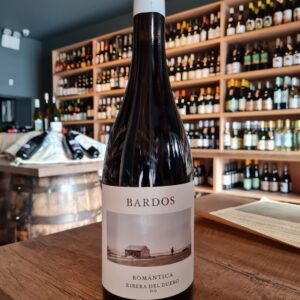 Bardos Romantica is a red wine from Ribera del Duero, produced by Bodegas Bardos, belonging to the Vintae Group, which are known to produce wines in twelve different Spanish regions, such as the Hacienda López from Haro. Made from 100% Tinta del País (Tempranillo). The grapes come from a rigorous selection of low yielding old vines located in the highlands of the central plateau in Onesimus Quintanilla (Valladolid). The grapes, once collected, are transported to the winery in boxes of 15 kilos and small trailers. Here a selection of bunches is made on tables. Subsequent fermentation and maceration is carried out in vats at a temperature of 28ªC for 3 or 4 weeks. Once fermented and macerated, Bardos Romantica undergoes a malolactic fermentation in French oak barrels, with a weekly beating and strict control of each barrel. Finally, Bardos Romantica is aged for 14 months in barrels of one and two years in French oak, located in underground cellars where the temperature is maintained throughout the year at around 14ºC. Bardos Romantica is a soft and original wine. After all the technicalities all I can say is a great wine, enjoy it, share it!
Bardos Romantica is a red wine from Ribera del Duero, produced by Bodegas Bardos, belonging to the Vintae Group, which are known to produce wines in twelve different Spanish regions, such as the Hacienda López from Haro. Made from 100% Tinta del País (Tempranillo). The grapes come from a rigorous selection of low yielding old vines located in the highlands of the central plateau in Onesimus Quintanilla (Valladolid). The grapes, once collected, are transported to the winery in boxes of 15 kilos and small trailers. Here a selection of bunches is made on tables. Subsequent fermentation and maceration is carried out in vats at a temperature of 28ªC for 3 or 4 weeks. Once fermented and macerated, Bardos Romantica undergoes a malolactic fermentation in French oak barrels, with a weekly beating and strict control of each barrel. Finally, Bardos Romantica is aged for 14 months in barrels of one and two years in French oak, located in underground cellars where the temperature is maintained throughout the year at around 14ºC. Bardos Romantica is a soft and original wine. After all the technicalities all I can say is a great wine, enjoy it, share it! -
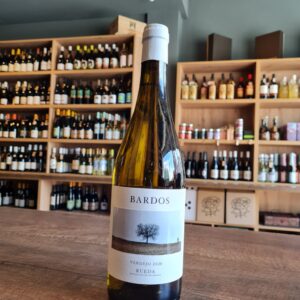 Bardos Verdejo is a wine made from 100% Verdejo from vineyards that are 20-25 years old, located in Rueda, at more than 700 metres of altitude on stony soils. The harvest is carried out at night, at temperatures below 15ºC. The fermentation is done with local yeasts at a controlled temperature and the wine rests on its lees for at least 4 months, gaining complexity and texture. On the nose, the intense aromas of fruit such as white peach combine with cut grass, citrus, balsamic and mineral notes. In the mouth it has a good volume and persistence, well integrated acidity and a characteristic aniseed aftertaste, typical of the grape. Really a high quality example of this native Spanish variety. Excellent with light bites, starters, salads and white fish. All of the wines by De Bardos are crafted by hand in a fully artisan manner.
Bardos Verdejo is a wine made from 100% Verdejo from vineyards that are 20-25 years old, located in Rueda, at more than 700 metres of altitude on stony soils. The harvest is carried out at night, at temperatures below 15ºC. The fermentation is done with local yeasts at a controlled temperature and the wine rests on its lees for at least 4 months, gaining complexity and texture. On the nose, the intense aromas of fruit such as white peach combine with cut grass, citrus, balsamic and mineral notes. In the mouth it has a good volume and persistence, well integrated acidity and a characteristic aniseed aftertaste, typical of the grape. Really a high quality example of this native Spanish variety. Excellent with light bites, starters, salads and white fish. All of the wines by De Bardos are crafted by hand in a fully artisan manner. -
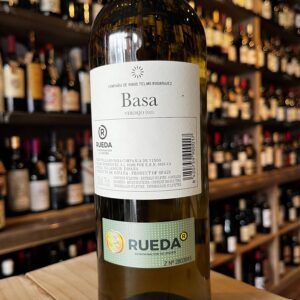
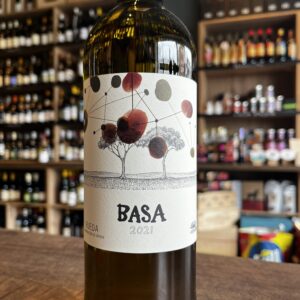 Telmo Rodriguez of Basque origin, studied wine at the Institute of Oenology in Bordeaux, before doing internships with Cos d’Estournel, Jean Louis Chave and Trevallon . He also worked in the vinification of wines from the family estate of Remelluri, in Rioja. Then, in 1990, with an investment of just a few thousand euros, he launched his own winery. He buys grapes to produce his first wines. His first plots of property did not arrive until 1997, in Rioja. Paradoxical for someone who was dying to explore new regions. One of the main principles of Telmo Rodriguez is that of respecting the Spanish tradition of cultivating the vine in goblet, because this method of managing the vine protects it from the great heat of Iberian vineyards. He is fiercely opposed to the fashion of trellising vineyards and only buys vines that respect his ideal. Telmo also works in biodynamics but, showing great common sense, he admits that he only does it for the respect of the land and that the mention of organic viticulture has no importance in his eyes. The important thing is that the result is a balanced and tasty wine. The name comes from the 40-year-old 'baso' or bush-trained vines that are planted on limestone-rich soils at over 700-meters elevation on a plateau along the Duero River. Soils are made of gravel from fluvial terraces, erosion slopes and glacis. Pairs great with comfort food, Tapas and Tortillas of all sorts
Telmo Rodriguez of Basque origin, studied wine at the Institute of Oenology in Bordeaux, before doing internships with Cos d’Estournel, Jean Louis Chave and Trevallon . He also worked in the vinification of wines from the family estate of Remelluri, in Rioja. Then, in 1990, with an investment of just a few thousand euros, he launched his own winery. He buys grapes to produce his first wines. His first plots of property did not arrive until 1997, in Rioja. Paradoxical for someone who was dying to explore new regions. One of the main principles of Telmo Rodriguez is that of respecting the Spanish tradition of cultivating the vine in goblet, because this method of managing the vine protects it from the great heat of Iberian vineyards. He is fiercely opposed to the fashion of trellising vineyards and only buys vines that respect his ideal. Telmo also works in biodynamics but, showing great common sense, he admits that he only does it for the respect of the land and that the mention of organic viticulture has no importance in his eyes. The important thing is that the result is a balanced and tasty wine. The name comes from the 40-year-old 'baso' or bush-trained vines that are planted on limestone-rich soils at over 700-meters elevation on a plateau along the Duero River. Soils are made of gravel from fluvial terraces, erosion slopes and glacis. Pairs great with comfort food, Tapas and Tortillas of all sorts -
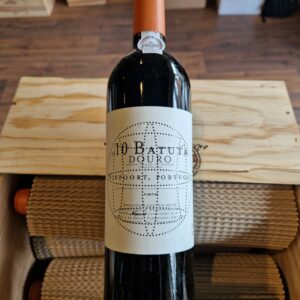 Niepoort is a family business dating back to 1842. Its winemaking tradition began in the Douro region, with the roduction of Port wine. Nowadays has a foothold in all the major Portuguese regions with still wines production outside the Douro Valley. Know-how, enthusiasm and an innovative mindset have passed down from generation to generation, making Niepoort one of the most authentic and notable Portuguese wine producers. The grapes to produce this wine come from Quinta do Carril, from a north-facing vineyard with more than 70 years, and also from old vineyards about 100 years old near Quinta de Nápoles. Niepoort sums up this elegant bottling well by saying “Batuta is a wine of extremes, having more of everything, is at the same time, the one with a more discrete behavior.” Quite so this year (and most), as the wine opens with subtlety and elegance, seeming rather mute. It is somewhat tinged by oak early in its life. That will be easily absorbed. It takes some air and patience to see what this sometimes too subtle wine has, but there is good structure underneath (and a little tannic pop that emerges with air) that should allow the wine to develop well and have the time to acquire some complexity, which is often its best feature. It has a very Burgundian feel, with a silky, graceful mid-palate. There is nothing obvious about this bottling in any year. This year, certainly, it is a Batuta that is perhaps subtle to a fault, but it will be a perfect food wine and when you are drinking it you will suddenly realize how much you like it.'' Time will tell, definitely one of the great current masters of winemaking. Not just in Portugal but in the world
Niepoort is a family business dating back to 1842. Its winemaking tradition began in the Douro region, with the roduction of Port wine. Nowadays has a foothold in all the major Portuguese regions with still wines production outside the Douro Valley. Know-how, enthusiasm and an innovative mindset have passed down from generation to generation, making Niepoort one of the most authentic and notable Portuguese wine producers. The grapes to produce this wine come from Quinta do Carril, from a north-facing vineyard with more than 70 years, and also from old vineyards about 100 years old near Quinta de Nápoles. Niepoort sums up this elegant bottling well by saying “Batuta is a wine of extremes, having more of everything, is at the same time, the one with a more discrete behavior.” Quite so this year (and most), as the wine opens with subtlety and elegance, seeming rather mute. It is somewhat tinged by oak early in its life. That will be easily absorbed. It takes some air and patience to see what this sometimes too subtle wine has, but there is good structure underneath (and a little tannic pop that emerges with air) that should allow the wine to develop well and have the time to acquire some complexity, which is often its best feature. It has a very Burgundian feel, with a silky, graceful mid-palate. There is nothing obvious about this bottling in any year. This year, certainly, it is a Batuta that is perhaps subtle to a fault, but it will be a perfect food wine and when you are drinking it you will suddenly realize how much you like it.'' Time will tell, definitely one of the great current masters of winemaking. Not just in Portugal but in the world -
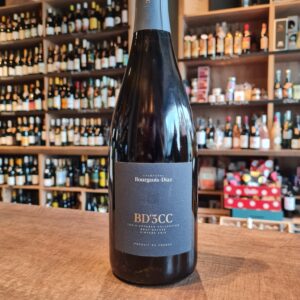 Located in Crouttes-sur-Marne, about 25km east of Meaux, the Bourgeois Diaz vineyard comprises 6.80 hectares of vines, of which 3.5 hectares are planted with Pinot Meunier, 2 with Pinot Noir and 1.3 with Chardonnay. The vines are on average 40 years old and have their roots in soils of clay, silt and chalk . Jérôme is the fourth generation of winegrowers on his father's side. His wife Charlotte, joined the estate in 2016, and today plays an important role in overseeing the estate, helping to develop the quality of the Champagnes. No pesticides, no chemical fertilizers, no technological manipulation, the wines of Jérôme and Charlotte are not only cared for, they are loved. The estate has been certified in organic and biodynamic viticulture since 2014. The biodynamic preparations 5 00P (twice a year) and 501 (3 to 4 times a year) are combined with low doses of copper and sulfur, horsetail decoctions, nettle, wicker, meadowsweet, chamomile, yarrow herbal teas, etc. Green manures are sown every other row, and an agro-forestry project was launched in 2019 (planting of 50 trees in a plot of 45 ares). Most of the work is done manually, foot by foot, to bring the maximum attention to the vines, which explains why the estate employs almost one person per hectare year-round. The harvest is manual, and most of the pickers are regulars, knowing the terroir and the state of mind of the estate. The bunches are harvested when ripe and sorted, so as to bring in grapes only in perfect sanitary condition. Disgorged on 01/12/2019 after 5 years of ageing, this non-dosed brut nature Champagne is straight, ample and deep, with great complexity brought by the long aging in the bottle Pair it with Lobster, bar carpaccio, lean tartare, Saint-Pierre, sweetbreads. Salut!!
Located in Crouttes-sur-Marne, about 25km east of Meaux, the Bourgeois Diaz vineyard comprises 6.80 hectares of vines, of which 3.5 hectares are planted with Pinot Meunier, 2 with Pinot Noir and 1.3 with Chardonnay. The vines are on average 40 years old and have their roots in soils of clay, silt and chalk . Jérôme is the fourth generation of winegrowers on his father's side. His wife Charlotte, joined the estate in 2016, and today plays an important role in overseeing the estate, helping to develop the quality of the Champagnes. No pesticides, no chemical fertilizers, no technological manipulation, the wines of Jérôme and Charlotte are not only cared for, they are loved. The estate has been certified in organic and biodynamic viticulture since 2014. The biodynamic preparations 5 00P (twice a year) and 501 (3 to 4 times a year) are combined with low doses of copper and sulfur, horsetail decoctions, nettle, wicker, meadowsweet, chamomile, yarrow herbal teas, etc. Green manures are sown every other row, and an agro-forestry project was launched in 2019 (planting of 50 trees in a plot of 45 ares). Most of the work is done manually, foot by foot, to bring the maximum attention to the vines, which explains why the estate employs almost one person per hectare year-round. The harvest is manual, and most of the pickers are regulars, knowing the terroir and the state of mind of the estate. The bunches are harvested when ripe and sorted, so as to bring in grapes only in perfect sanitary condition. Disgorged on 01/12/2019 after 5 years of ageing, this non-dosed brut nature Champagne is straight, ample and deep, with great complexity brought by the long aging in the bottle Pair it with Lobster, bar carpaccio, lean tartare, Saint-Pierre, sweetbreads. Salut!! -
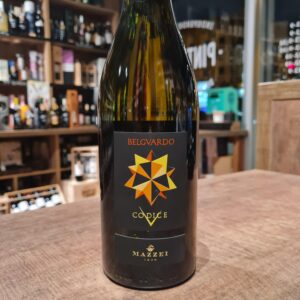 That of the Mazzei is one of the longest and most structured stories that wine Tuscany can give. A story that has as its fulcrum the Chianti Classico and precisely the Castello di Fonterutoli; today a modern cellar with 117 hectares of vineyards for a production of 800,000 bottles. But also a story, made up of great personalities such as, to stay in the near future, Lapo Mazzei, in a period of strong changes, at the same time lays the foundations of today's company. Today, at the helm of this company are the sons Filippi and Francesco who over time have achieved significant goals and given the company a broader scope starting with some acquisitions, even outside Tuscany. In the mid-90s, however, the Belguardo estate project in Maremma was born, with 34 hectares of vineyards. From here comes a non-trivial variation of Vermentino, now it has become the main vine of the Tuscan coast. The white Vermentino "Codice V" of the Belguardo estate of the Mazzei family is a wine born in the heart of the Maremma, on the hills of Grosseto and Montiano. The vines were planted with Vermentino clones originating from Corsica, on loose soils with a predominantly sandy matrix, facing south, south-west. Fermentation takes place in steel tanks at low temperatures and for 20% of the mass in terracotta dolium with maceration on the skins for 4 months. Before final assembly and bottling, the wine rests in steel and terracotta for a few months. on the hills of Grosseto and Montiano. Recommended with fish and white meat savoury dishes, risotto, porcini mushrooms. A tutti!
That of the Mazzei is one of the longest and most structured stories that wine Tuscany can give. A story that has as its fulcrum the Chianti Classico and precisely the Castello di Fonterutoli; today a modern cellar with 117 hectares of vineyards for a production of 800,000 bottles. But also a story, made up of great personalities such as, to stay in the near future, Lapo Mazzei, in a period of strong changes, at the same time lays the foundations of today's company. Today, at the helm of this company are the sons Filippi and Francesco who over time have achieved significant goals and given the company a broader scope starting with some acquisitions, even outside Tuscany. In the mid-90s, however, the Belguardo estate project in Maremma was born, with 34 hectares of vineyards. From here comes a non-trivial variation of Vermentino, now it has become the main vine of the Tuscan coast. The white Vermentino "Codice V" of the Belguardo estate of the Mazzei family is a wine born in the heart of the Maremma, on the hills of Grosseto and Montiano. The vines were planted with Vermentino clones originating from Corsica, on loose soils with a predominantly sandy matrix, facing south, south-west. Fermentation takes place in steel tanks at low temperatures and for 20% of the mass in terracotta dolium with maceration on the skins for 4 months. Before final assembly and bottling, the wine rests in steel and terracotta for a few months. on the hills of Grosseto and Montiano. Recommended with fish and white meat savoury dishes, risotto, porcini mushrooms. A tutti! -
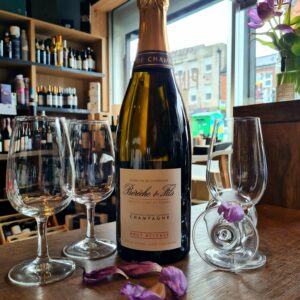 In one of mine first wine classes, the teacher said regarding pairing wines with meals. ''You can attempt everything, and please please do so, but don't matter what you will try, you will see that there is only one type of wine that will pair beautifully with all the meals throughout the day. that wine is Champagne!''. Oh dear was he right...Pair this one with a lovely cooked breakfast and you in for a treat. As for the background of this wine: Raphaël and Vincent Bérêche, two of Champagne’s rising stars, have been working alongside their father Jean-Pierre at their nine-hectare estate of Bérêche et Fils since 2004, and today they are putting an increasingly personal stamp on this thoughtfully-run Domaine. The Bérêche estate owns vines in several different sectors of Champagne, with the three primary areas being the immediate vicinity around Ludes and Craon de Ludes, the gravelly terroir of Ormes in the Petite Montagne, and the area around Mareuil-le-Port, on the left bank of the Vallée de la Marne. A small parcel is also found in Trépail, in the eastern Montagne de Reims. Most recently, the estate has acquired its first grand cru vineyard in 2012, a tiny, 15-are parcel in the village of Mailly. The estate's vineyards are planted with roughly equal parts of the three varieties, and increasing attention is being paid to natural viticulture—Bérêche completely stopped using chemical herbicides in 2004 and has planted cover crops in all of the vineyards, and since 2007 a portion of the vineyard is being converted to biodynamics. Sharp-eyed observers will note that beginning in 2013, Bérêche has changed its status from RM (récoltant-manipulant) to NM (négociant-manipulant). This was done for two reasons: the first was to augment the production of the Brut Réserve by about 15 to 20 percent, selecting grapes from three trusted growers in the villages of Ludes, Maily and Rilly-la-Montagne. These grapes will be used exclusively for the Brut Réserve, and the rest of Bérêche's wines remain entirely estate-grown. The second reason was the creation of a négociant range called Crus Sélectionnés, released under the label Raphaël et Vincent Bérêche. These are wines selected from various sources across the Champagne region, designed to illustrate and reflect their respective terroirs, with the first series of wines to be released in 2014. At Bérêche, vinification tends towards the traditional: parcels are vinified separately, with natural yeasts used for smaller tanks and selected yeasts for larger ones. The family has slowly been increasing the percentage of oak used in the cellar, and today about three-quarters of the production is vinified in barrel. The malolactic is systematically avoided, and the wines are bottled around May, without filtration and with a natural cold-settling, achieved by opening all of the cellar’s windows and waiting for three days. Disgorging is still done entirely by hand, and unlike many growers who are embracing the idea of concentrated must for the dosage, Bérèche adamantly prefers a traditional liqueur. Recently the Bérêches have begun to work more with cork for the second fermentation, believing that it results in a wine of more character and complexity. Raphaël’s father was always a firm believer in cork, but it requires a lot of extra work—now that Raphaël and Vincent are working with him at the estate, it’s easier to accomplish. Today, a quarter of the production is bottled with cork instead of capsule, spread over five different cuvées: Les Beaux Regards, Vallée de la Marne Rive Gauche, Le Cran, Reflet d'Antan and the Campania Remensis rosé. Pair it with: Oysters, Grilled fish, Salads, Cheeses, Starters & Canapes
In one of mine first wine classes, the teacher said regarding pairing wines with meals. ''You can attempt everything, and please please do so, but don't matter what you will try, you will see that there is only one type of wine that will pair beautifully with all the meals throughout the day. that wine is Champagne!''. Oh dear was he right...Pair this one with a lovely cooked breakfast and you in for a treat. As for the background of this wine: Raphaël and Vincent Bérêche, two of Champagne’s rising stars, have been working alongside their father Jean-Pierre at their nine-hectare estate of Bérêche et Fils since 2004, and today they are putting an increasingly personal stamp on this thoughtfully-run Domaine. The Bérêche estate owns vines in several different sectors of Champagne, with the three primary areas being the immediate vicinity around Ludes and Craon de Ludes, the gravelly terroir of Ormes in the Petite Montagne, and the area around Mareuil-le-Port, on the left bank of the Vallée de la Marne. A small parcel is also found in Trépail, in the eastern Montagne de Reims. Most recently, the estate has acquired its first grand cru vineyard in 2012, a tiny, 15-are parcel in the village of Mailly. The estate's vineyards are planted with roughly equal parts of the three varieties, and increasing attention is being paid to natural viticulture—Bérêche completely stopped using chemical herbicides in 2004 and has planted cover crops in all of the vineyards, and since 2007 a portion of the vineyard is being converted to biodynamics. Sharp-eyed observers will note that beginning in 2013, Bérêche has changed its status from RM (récoltant-manipulant) to NM (négociant-manipulant). This was done for two reasons: the first was to augment the production of the Brut Réserve by about 15 to 20 percent, selecting grapes from three trusted growers in the villages of Ludes, Maily and Rilly-la-Montagne. These grapes will be used exclusively for the Brut Réserve, and the rest of Bérêche's wines remain entirely estate-grown. The second reason was the creation of a négociant range called Crus Sélectionnés, released under the label Raphaël et Vincent Bérêche. These are wines selected from various sources across the Champagne region, designed to illustrate and reflect their respective terroirs, with the first series of wines to be released in 2014. At Bérêche, vinification tends towards the traditional: parcels are vinified separately, with natural yeasts used for smaller tanks and selected yeasts for larger ones. The family has slowly been increasing the percentage of oak used in the cellar, and today about three-quarters of the production is vinified in barrel. The malolactic is systematically avoided, and the wines are bottled around May, without filtration and with a natural cold-settling, achieved by opening all of the cellar’s windows and waiting for three days. Disgorging is still done entirely by hand, and unlike many growers who are embracing the idea of concentrated must for the dosage, Bérèche adamantly prefers a traditional liqueur. Recently the Bérêches have begun to work more with cork for the second fermentation, believing that it results in a wine of more character and complexity. Raphaël’s father was always a firm believer in cork, but it requires a lot of extra work—now that Raphaël and Vincent are working with him at the estate, it’s easier to accomplish. Today, a quarter of the production is bottled with cork instead of capsule, spread over five different cuvées: Les Beaux Regards, Vallée de la Marne Rive Gauche, Le Cran, Reflet d'Antan and the Campania Remensis rosé. Pair it with: Oysters, Grilled fish, Salads, Cheeses, Starters & Canapes


